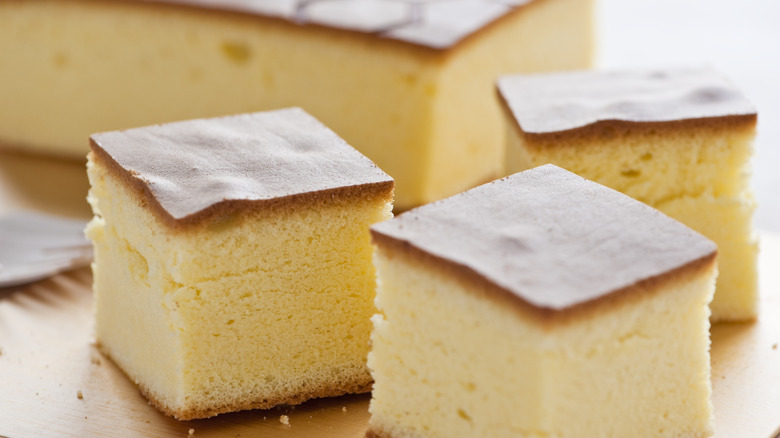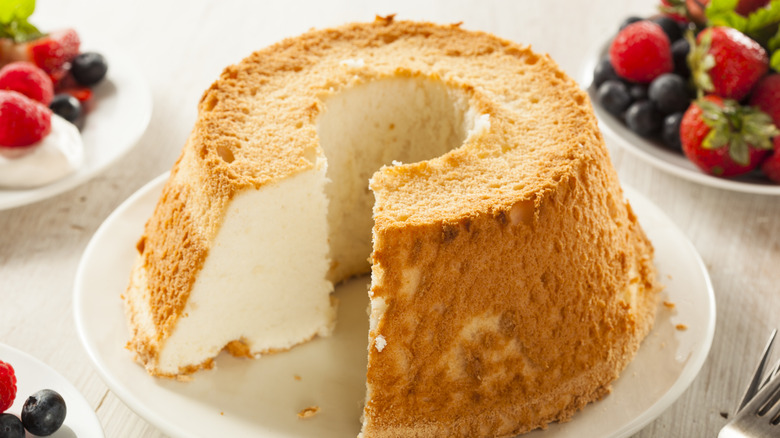The Major Exception To Remember When Baking Foam Cakes
Though most cake recipes call for a buttered, oily lining of the baking tray before the batter is poured in for baking, foam cakes are a different story. The fluffy texture of foam cakes adds to the appeal of these baked goods, and baking instructions for angel food and chiffon cakes require a unique approach when it comes to preparing ingredients for the oven.
Pans that are destined to hold foam cakes, like angel food and chiffon treats, do not need to be greased. Because these recipes incorporate heavily beaten egg whites into the cake recipe, introducing fat like butter and ghee into the mix can have an adverse effect on the texture these fluffy cakes are meant to deliver.
Although génoise is the exception to the rule, all other spongy cakes don't call for floured and greased pans. So, if you're counting on pulling a light-as-air cake out of your oven, you'll want to keep butter away from your baking trays.
Preserving delicate texture
Cakes made with fat like shortening, margarine, butter, and oil require a different baking process than those that include whipped eggs in their list of ingredients. Cakes made with butter must be made with baking powder or baking soda so they rise when placed into the oven, whereas foam cakes derive their spongy texture from the beaten eggs.
Foam cakes include sponge cakes, angel food, chiffon, biscuit, and some flourless cakes, and their recipes include a significant ratio of eggs, with batters that must be baked in ungreased pans so the texture of the whipped eggs is preserved. Foam cakes are fragile and it can take some patience to get the batter just right. If you're wanting to make a cake with a light, airy texture, it would be a shame to put your hard work to waste by wiping the inside of your baking mold with an empty butter wrapper.
In the case of foam cakes, save butter for bread, and focus on whipping the eggs, instead.

